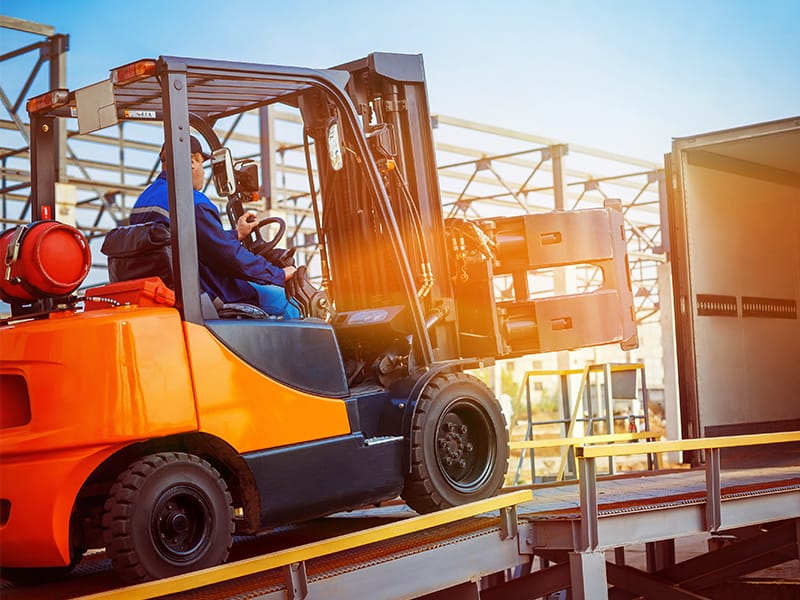When it comes to forklift trucks, you have two basic options for how to power them—an internal combustion engine or electric power. Each system has its own respective benefits and disadvantages, so there’s no right or wrong, but if you’re trying to decide which is a better option for your operations, here’s what you need to know to decide:
The Advantages of Internal Combustion Forklifts
Internal combustion forklifts can run on a variety of fuels, including:
- Gasoline
- Diesel
- Liquid propane
- Natural gas
That means you have the ability to choose a forklift system that uses the most economical fuel type for your location and needs. Plus, when you run out of fuel, all you need to do is fill the tank and you’re ready to go in a matter of minutes.
At the same time, they’re able to operate in extreme environments, including intense heat and cold, and have significantly higher weight capacities than electric forklifts. Finally, internal combustion forklifts come with lower upfront costs and generally have a reach of up to 36 feet.
The Advantages of Electric Forklifts
The most significant advantage of electric forklifts is that they don’t emit any exhaust, so they’re safe to operate indoors even without ventilation. At the same time, their battery systems typically last long enough to cover a standard eight-hour shift before needing to be recharged. Because they can be recharged, they cost significantly less to power and maintain than internal combustion forklifts. On average, an electric forklift only costs $1,500 to power over the course of a year, translating to about $3 per charge.
The Disadvantages of Internal Combustion Forklifts
While the upfront costs are lower, the primary disadvantage of internal combustion forklifts is that they cost more to operate and maintain than electric forklifts. Depending on use, fuel can end up costing anywhere from $20 to $70 each day to run a single lift truck. Additionally, internal combustion engines require regular maintenance and are more prone to breaking down, so when maintenance or repairs are required, you have to absorb those costs along with additional downtime.
The Disadvantages of Electric Forklifts
Electric forklifts come with higher upfront costs than their internal combustion counterparts. That cost is often offset due to their longer lifespans as well as lower maintenance and operating costs. Generally, electric forklifts also have a lower reach height, typically tapping out at 30 feet, and reduced load capacities when compared to internal combustion options. Finally, when the batteries of an electric forklift are depleted, you either have to wait for them to charge or swap them out with fresh ones. However, with proper planning that should rarely be an issue. Overall, the advantages of electric forklifts quickly outweigh the disadvantages.
Ready to Take the Next Step?
Whether you still need some help deciding between an internal combustion and an electric forklift or you already know what you’re looking for, the experts at Brennan Equipment Services are here to help. We’ll find you the right forklift for your facility from Taylor-Dunn, Hyundai, or Cascade. When you partner with Brennan, we’ll work with you to understand your day-to-day workflows and deliver the material handling equipment your team needs for long-term success.

